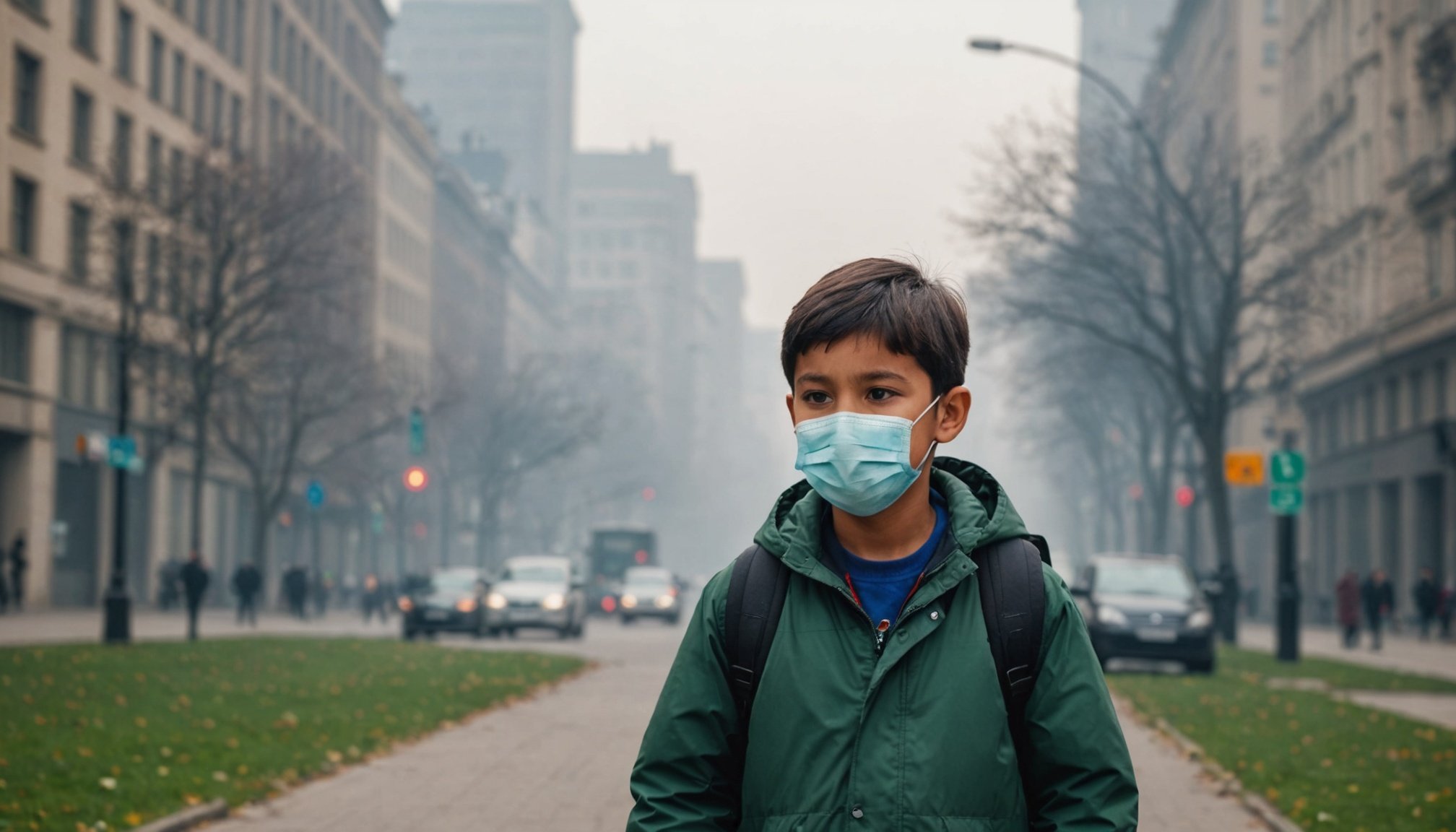In recent decades, we have witnessed an alarming rise in respiratory diseases among children globally. As our cities grow and industries expand, air pollution becomes an inevitable part of our urban environment. This dangerous blend of pollutants poses a significant risk to the respiratory health of our youngest population. Recent studies reveal an undeniable link between exposure to contaminated air and increased cases of asthma and other respiratory illnesses in children. In this article, we delve into the intricacies of how air pollution affects children’s lung health and explore the potential long-term consequences of early exposure.
Understanding Air Pollution and Its Components
Air pollution isn’t merely a distant environmental issue; it’s an immediate concern that affects daily life, particularly for vulnerable populations such as children. A complex mixture of pollutants, including particulate matter (PM), nitrogen dioxide (NO2), sulfur dioxide (SO2), and ozone (O3), contribute to the degradation of air quality. When inhaled, these pollutants can have severe implications on lung health.
Also read : How can exercise regimens be tailored for individuals with limited mobility?
Particulate Matter (PM): Comprising both fine and ultrafine particles, PM can penetrate deep into the lungs, causing inflammation and exacerbating existing respiratory conditions. Studies have shown that children exposed to high levels of PM are more susceptible to developing asthma.
Nitrogen Dioxide (NO2): A byproduct of fossil fuel combustion, NO2 is prevalent in urban areas with high traffic. Exposure to NO2 has been linked to decreased lung function and increased respiratory infections, particularly among children.
Additional reading : How can telehealth services improve access to care for rural populations?
Sulfur Dioxide (SO2): Often associated with industrial activities, SO2 can irritate the airways and trigger asthma symptoms in children.
Ozone (O3): Ground-level ozone is formed when pollutants from cars and industrial emissions react in sunlight. High ozone levels can aggravate asthma and reduce lung function in children, posing a significant risk to their respiratory health.
Given these factors, it is crucial to recognize the dangers posed by air pollution and take proactive steps to minimize children’s exposure.
Impact of Air Pollution on Children’s Respiratory Health
The adverse effects of air pollution on children’s health are profound and far-reaching. Respiratory systems are particularly vulnerable due to ongoing development and rapid breathing rates compared to adults. Consequently, pollutants can inflict significant damage during these crucial years of growth.
Increased Risk of Asthma and Bronchitis: Air pollution is a known trigger for asthma and acute bronchitis in children. Research published in reputable journals like PubMed and DOI suggests a strong correlation between long-term exposure to pollutants and the development of these conditions. Asthma, characterized by chronic inflammation of the airways, can severely affect a child’s quality of life, limiting physical activities and potentially leading to life-threatening situations.
Compromised Lung Development: Continuous exposure to poor air quality can hinder proper lung development in children. This could result in reduced lung function, increasing the likelihood of respiratory diseases in adulthood.
Increased Hospital Admissions: Episodes of high pollution levels often coincide with increased hospital visits for respiratory issues among children. Google Scholar articles have highlighted such trends, emphasizing the urgent need for intervention.
Overall Health Implications: The impact of air pollutants extends beyond the lungs. They can affect cardiovascular health and cognitive development, making it imperative for parents and policymakers to address air quality concerns.
Mitigating the Effects: What Can Be Done?
Despite the daunting statistics surrounding air pollution and children’s health, there are effective strategies that can mitigate these risks. Collective action from individuals, communities, and governments is essential to ensuring a healthier environment for future generations.
Reduce Exposure: Simple measures can significantly reduce children’s exposure to pollution. Encourage indoor activities when outdoor pollution levels are high and ensure that homes have good ventilation systems. Air purifiers can also play a crucial role in maintaining good indoor air quality.
Advocacy for Clean Air Policies: As a community, raising awareness about the importance of air quality is crucial. Supporting policies aimed at reducing emissions from vehicles and industries can lead to significant improvements in overall air quality. Implementing strict regulations on pollutant emissions is essential for long-term benefits.
Promote Green Spaces: Increasing greenery in urban areas can improve air quality. Trees and plants naturally filter air pollutants and can help create healthier environments.
Education and Awareness: Educate parents, caregivers, and children about the effects of air pollution. Knowledge empowers communities to adopt healthier practices and advocate for cleaner air.
Support Research and Innovations: Continued research into the effects of air pollution and innovative solutions for cleaner air can drive significant change. Support for studies and technologies, such as those found in PubMed and DOI, can lead to breakthroughs in air quality management.
The Future Outlook: A Call for Change
While the link between air pollution and respiratory diseases in children is well established, the journey toward cleaner air requires ongoing commitment and innovation. Technological advancements and increased awareness provide an optimistic outlook for future generations.
Innovations in Air Quality Monitoring: With the advent of advanced technologies, real-time monitoring of air quality has become more accessible. Devices that measure pollutant levels enable communities to make informed decisions, safeguarding children’s health.
Global Initiatives and Collaboration: Tackling air pollution is a global challenge that requires international cooperation. Initiatives from organizations like the World Health Organization (WHO) focus on setting air quality standards and promoting cross-border partnerships to combat pollution.
Role of Public Health Campaigns: Effective public health campaigns are essential for driving change. By emphasizing the importance of clean air, these campaigns can mobilize efforts to reduce pollution and protect children from its harmful effects.
Empowering Youth: Educating children about the significance of clean air and encouraging them to advocate for environmental protection can inspire change. The younger generation holds the power to demand better policies and sustainable practices.
In conclusion, addressing air pollution is vital for safeguarding children’s respiratory health. Concerted efforts from all sectors of society can pave the way for an environment where children can breathe freely, embracing a future free from the burdens of respiratory diseases. As custodians of this planet, it is our collective responsibility to ensure that the air they breathe is of the highest quality possible.
Our understanding of the connection between air pollution and respiratory diseases in children continues to evolve. With each study published, the urgency to address this global health crisis becomes increasingly apparent. By taking proactive steps to reduce pollution and advocating for clean air, we can protect the health of current and future generations. It is our duty to ensure that every child has access to clean air to breathe, allowing them to grow and thrive unencumbered by the risks posed by air pollutants. Let us act decisively and collaboratively, embracing solutions that promise a healthier, more sustainable future for all.











